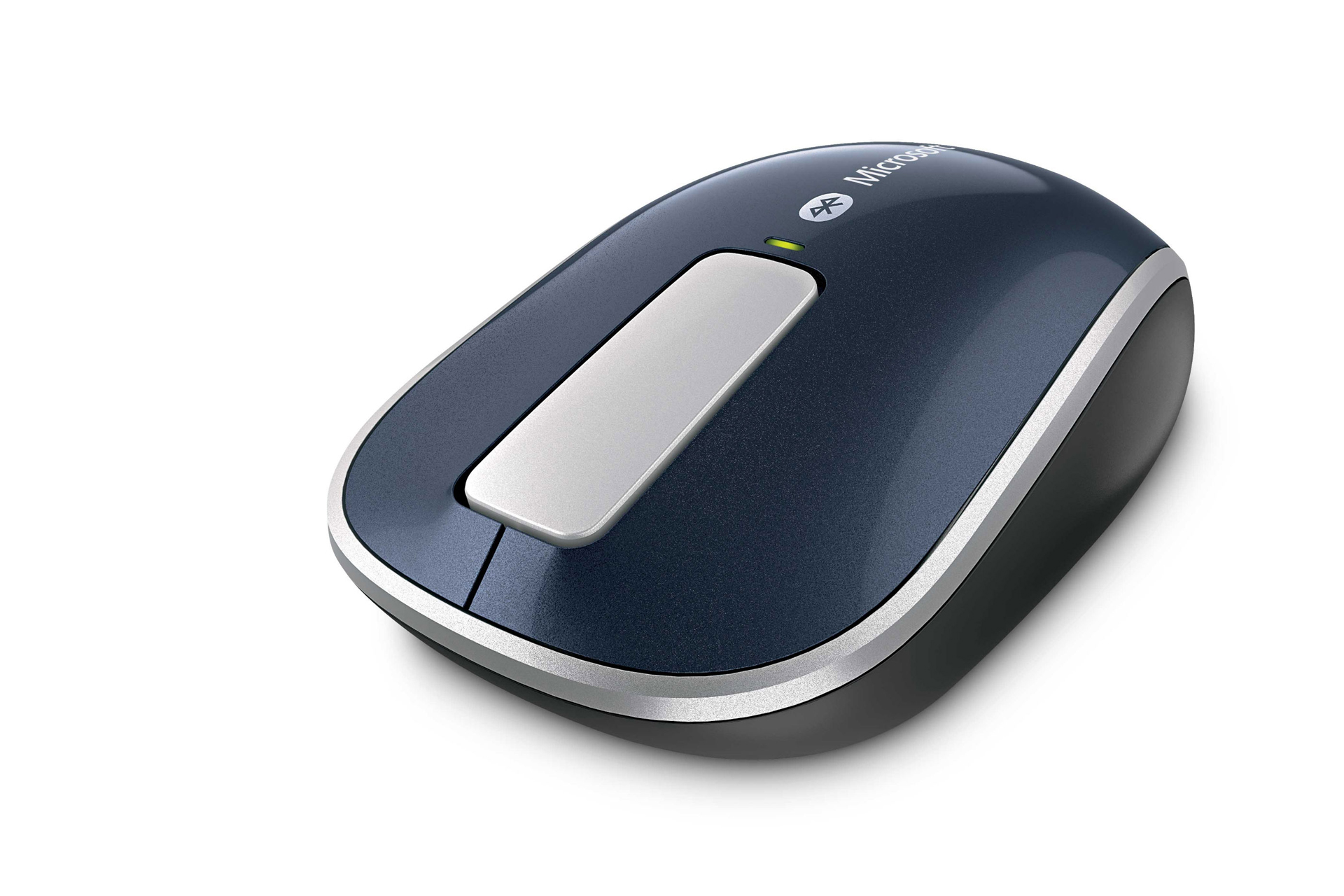9.2010 – 9.2011
Microsoft Explorer Touch Mouse
MY ROLE
With Microsoft’s Arc Touch Mouse well received, touch scrolling was desired across the mouse product line. I was responsible for evolving the experience I defined for Arc Touch Mouse into a touch scrolling component platform first leveraged by the Explorer Touch Mouse and later by Sculpt Touch Mouse.
Touch scrolling was an exciting innovation story for a commodity product category and horizontal scrolling was becoming increasingly important to future Windows and application experiences. So much so, Microsoft’s PC Hardware business was investing in two completely different architectures. This subsystem platform was one approach and the other was an architecture slated for Touch Mouse which would also enable multi-finger gestures. I was the design lead for both efforts which were concurrently in development.
Price conscious individuals interested in a more modern mouse with touch scrolling.
For the platform and the first product to use it were to…
- Design a comfortable wireless mouse with precise tracking and good battery life.
- Develop a touch scrolling platform which refines the experience of Arc Touch Mouse and meets the cost requirements of lower priced products.
As the industrial designer focused on the overall form, I focused on the touch scrolling platform and its integration with the product. I concentrated on enabling horizontal scrolling, improving haptic feedback and achieving the ideal mechanical button force below the touch sensor for mechanical wheel parity. To determine the touch sensor design, I led the prototyping of various touch sensor shapes to understand the minimum width necessary and the ramifications of larger widths for a great horizontal scrolling experience. Considering various grip styles and the biomechanics of hands, I made sure we explored trapezoid shapes which provide sensor width where you need it most and not where you don’t. Evaluating these options through user research identified the ideal sensor shape, pattern, and splay. Working with the firmware engineer as the hardware matured, I continued to refine the flick/pan scrolling algorithms, improving performance, and reducing direction detection latency – all eventually validated with user research.
Addressing the inherit compromises of Arc Touch Mouse’s tap interaction, I required mechanical button feedback for the third, fourth and fifth buttons. Now instead of tapping you’d press the scrolling affordance (just like any other button) and where would determine which button you’d invoked (i.e. top, middle bottom). This design change immediately improved the discovery of the middle mouse button and eliminated the need to disambiguate between taps and flicks. To achieve the ideal button feel while preventing unwanted actuations during scrolling, I worked with the engineers to prototype a method of capturing typical exertion forces when scrolling. I used the data captured to then drive development of several functional prototypes, evaluating different switches and cantilever distances. To increase user confidence with top and bottom mouse buttons, I collected finger position data to refine the regions mapped in firmware and advocated for a slightly raised scrolling affordance to reduce inadvertent actuation.
To achieve stronger, crisper, more uniform haptic feedback, the engineering team evaluated alternative haptic components and methods of mounting. As a promising hardware solution emerged, I engaged the engineers, refining the haptic drive waveform to a desirable vibration intensity, duration and sound. With a tuned experience, I drafted questions for user research to collect actionable engineering feedback. The broader perspective helped me push for tighter haptic/scrolling event synchronization, counterbalanced haptic intensity for different finger movements and a more perceivably different haptic strength scale for the control panel customization settings. Explorer Touch Mouse’s touch scrolling experience was better than Arc Touch Mouse and more consistently manufactured. The platform was later leveraged for Microsoft’s Sculpt Touch Mouse (below).
